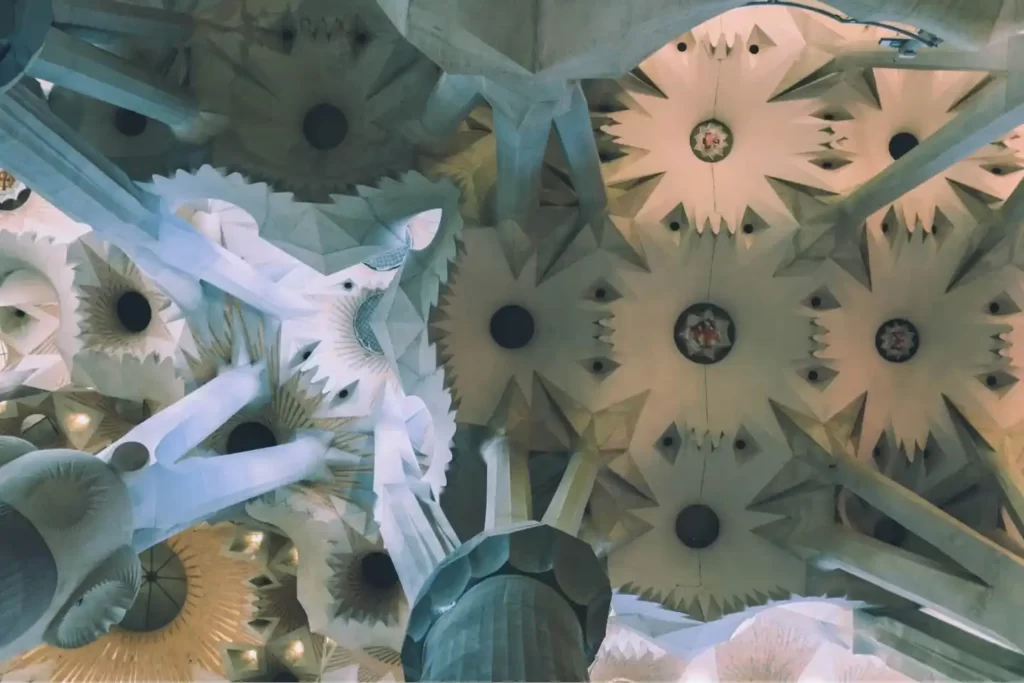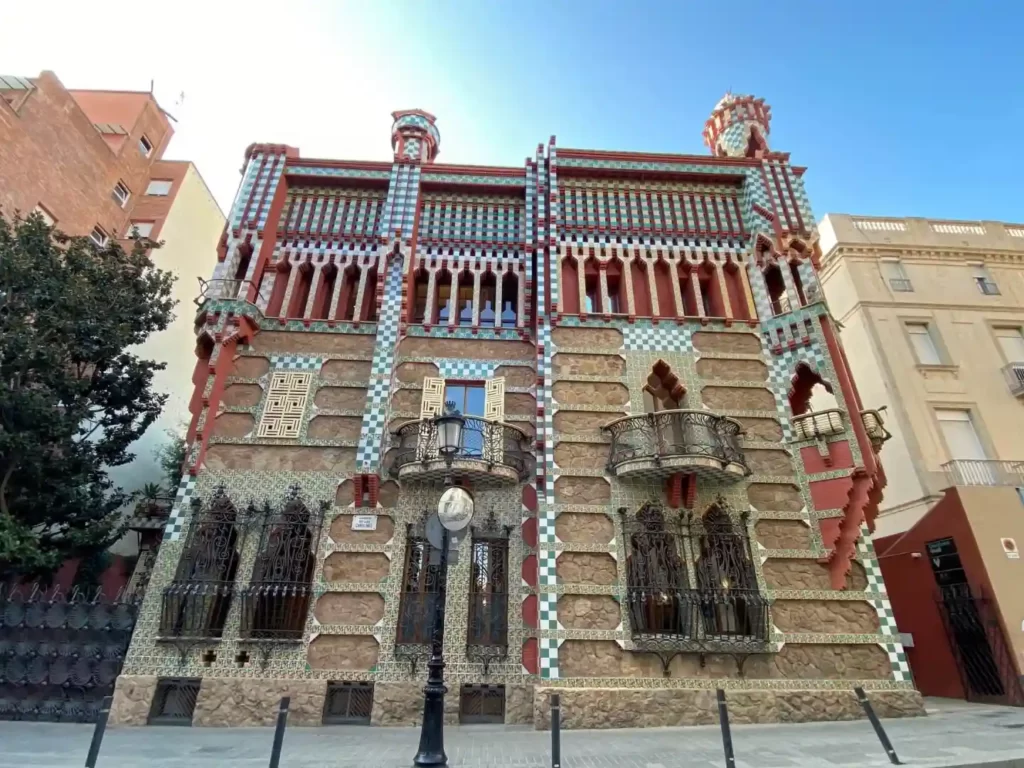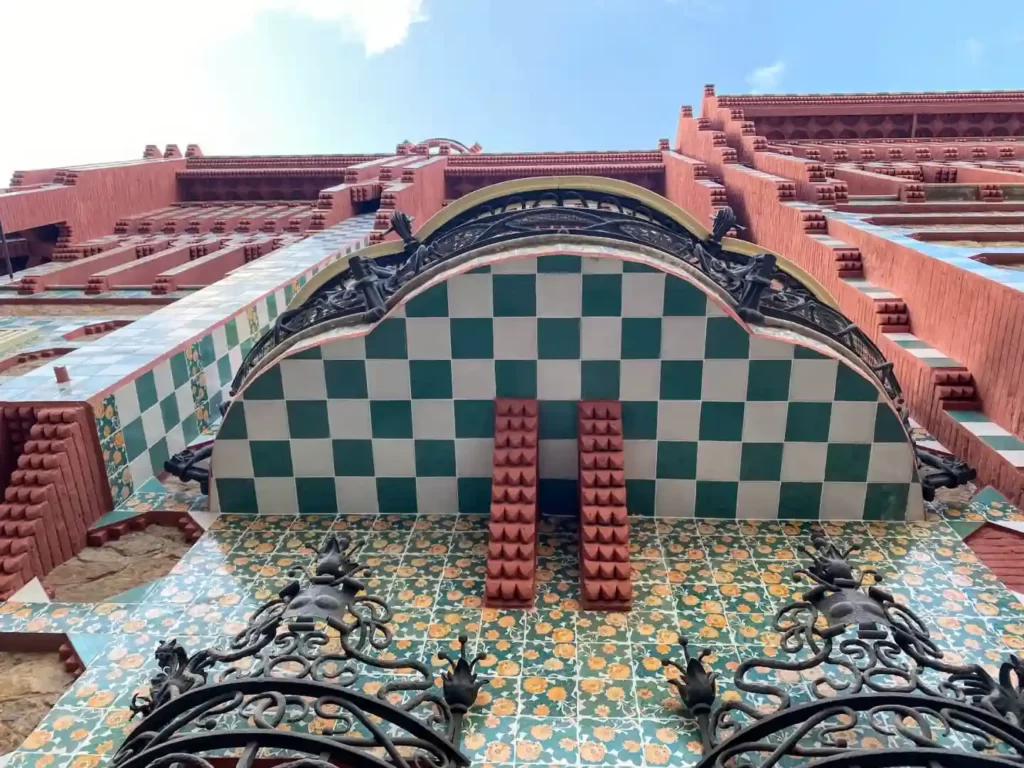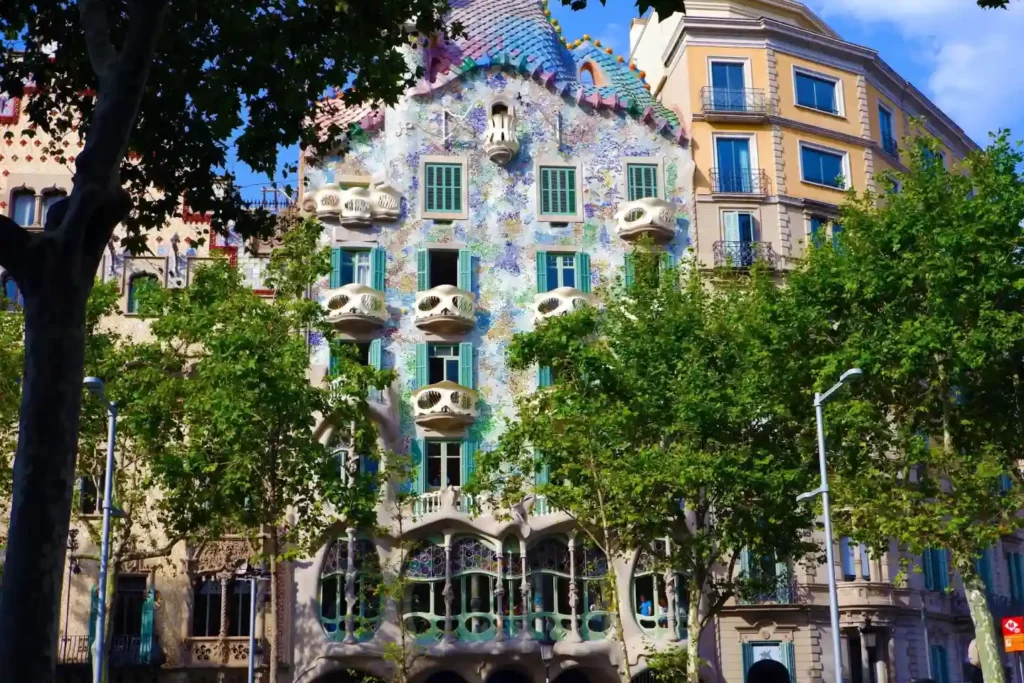Gaudí’s architecture in Barcelona is among the main reasons many people visit that Spanish city each year. With his fantastic imagination and creativity, Antoni Gaudí is one of the most fascinating architects of all time. Most of his buildings are in Barcelona, so visiting that town is a great excuse to learn more about him. To make your search for Gaudí’s buildings in Barcelona easier, here is the Culture Tourist’s guide to Gaudí’s architecture in Barcelona.
Gaudí’s architecture in Barcelona
This post contains some affiliate links. Read our Privacy Policy for more info.
Gaudí lived most of his life in Barcelona. So it comes as no surprise majority of his buildings are located there. He lived in several apartments in the Eixample neighbourhood before he moved to his house at Park Güell.
Barcelona is home to around fourteen edifices designed by Antoni Gaudí, the most famous one among them being Sagrada Família. In this article, you’ll find some of the most famous Gaudí’s architecture in Barcelona. However, he made some other interesting artworks, as well. For example, Lampposts at Placa Reial or the pavement tiles at Passeig de Gracia.
⤷ Read more: My travel diary – Three days in Barcelona
Who was Antoni Gaudí
However, let’s start with a few words about Antoni Gaudí first. Born in 1852, Antoni Gaudí devoted his life to architecture. He was one of the leaders and the most famous representatives of Catalan Modernism.
Gaudí is very interesting because of his unique way of designing buildings. He would never use plans or technical drawings for his projects. Instead, he would make three-dimensional scale models.
That approach is understandable when we know he was influenced mainly by nature for his buildings. If the pillar resembles a tree and it isn’t based on geometrical forms, it’s easier to model it than to make an architectural drawing of it.
Gaudí focused on every detail in his work and designed everything from furniture to facade decoration. He invented the technique called trencadis, in which he used waste ceramic pieces and made decorations with them.
During his career, Antoni Gaudí was influenced by Oriental architecture (Casa Vicens), neo-Gothic style (Sagrada Família apse) and Moorish architecture in Spain. But, his main inspiration was nature, and he mostly worked in the Catalan Modernism style.
After his death, Gaudí’s work was first criticised. However, around the mid-20th century, his legacy got praised by artists such as Salvador Dali. In 1957, Gaudí’s first international exhibition was organised at MOMA in New York. Today, seven of his works are declared World Heritage Sites by UNESCO.
Gaudí died on June 10th 1926. Since 2013, that date has been celebrated as World Art Nouveau Day.
⤷ Read more: Salvador Dali locations around Barcelona
Where to see Gaudí’s architecture in Barcelona
My big tip for visiting Gaudí’s architecture in Barcelona is to book your entrance tickets in advance online. All of these places are very popular and you’ll be queueing for some time to get in. I’ve included links to the online tickets next to each site I mentioned (in case they are available), so you can save some time and book them online.
Casa Vicens
Address: Carrer de les Carolines, 20-26, 08012 Barcelona
Online ticket: For online ticket to Casa Vicens click here.
Built between 1883 and 1885, Casa Vicens is considered the first major work by Antoni Gaudí. Unlike his later work, Casa Vicens was strongly influenced by the Orientalist style. He built it as a summer house for Manuel Vicens. The architectural design was quite simple. However, the decoration, especially ceramic tiles, already shows the direction in which Gaudí’s architecture would develop in later years.
Unlike his later residential buildings, Casa Vicens was built as a home for one family. The house was turned into a museum in 2017, which can be visited today.
Park Güell
Address: Carretera del Carmel, 23A, 08024 Barcelona
Online ticket: For online ticket to Park Güell click here.
Commissioned by the Spanish industrialist Eusebi Güell, this famous Gaudí’s park in Barcelona was built between 1900 and 1914. It’s a beautiful example of Gaudí’s naturalist phase. The idea was to create a high-quality luxury residential area around the park. However, the project was unsuccessful; only one out of the planned sixty plots was sold. In 1926 it became a public park and one of Barcelona’s most famous Gaudí projects.
Located on a hill, the park offers one of the best views of Barcelona. The park is well known for its Dragon fountain and extensive use of the trencadis technique on the walls and benches in the garden. Gaudí also included a lot of political and religious symbolism in the park’s architecture (for example, the Catalan flag).
Park Güell is also where Gaudí had his house and where he lived between 1906 and 1926. His home is turned into the Gaudí Museum today, which can be visited.
⤷ Read more: Cultural tourism explained – How to be a cultural tourist
Sagrada Família
Address: C/ de Mallorca, 401, 08013 Barcelona
Online ticket: For online ticket to Sagrada Família click here.
Although still unfinished, Sagrada Família is one of the most famous Gaudí’s buildings in Barcelona. Its construction started in 1882. After its first architect resigned a year later, Gaudí took over and significantly changed the project.
The church is an extraordinary example of a unique Gaudí style. It has three main facades, of which only two are finished: the Nativity and the Passion facade. The church decoration contains a lot of symbolism, from turtles and chameleons to the Tree of Life.
With its usage of coloured glass, its interior is equally fascinating. One side of the church is covered with green-blue, while another one with orange-red windows. All of the pillars look like trees, with branches forming a ceiling.
Sagrada Família was Gaudí’s leading project, and he entirely devoted the last eleven years of his life to it. The church is still being constructed according to its architect’s original plans. Gaudí is buried in the church’s crypt.
I highly recommend visiting this church on tour and the Sagrada Família Museum on the site, too. It’s undoubtedly one of the most fascinating buildings in the world.
⤷ Read more: Why is Sagrada Familia not finished yet
Casa Milà
Address: Passeig de Gràcia, 92, 08008 Barcelona
Online ticket: For online ticket to Casa Milà click here.
Casa Milà, also known as La Pedrera, is the last residential building created by Antoni Gaudí between 1906 and 1912. The structure was inspired by a mountain. Built of stone, the top floor is covered with white tiles, emulating the snow-covered mountain.
Casa Milà consists of two buildings and has nine floors. The most fascinating part of it is its roof. It’s decorated with sculpted fans and chimneys, influenced by medieval helmets. However, urban legend says George Lucas got inspired by them for the stormtroopers’ appearance in his Star Wars.
Casa Batlló
Address: Passeig de Gràcia, 43, 08007 Barcelona
Online ticket: For online ticket to Casa Batlló click here.
Antoni Gaudí was commissioned to renovate the Classicist house built in 1877 by its new owner Josep Batlló. He worked on it between 1904 and 1906 and transformed it into one of Barcelona’s most famous Modernist buildings.
Like on many other buildings he avoided using straight lines in its design. Gaudí mostly worked on the facade of Casa Batlló, its main floor and its roof. On the front, he again used decorative tiles for the facade mosaic. Its main floor was the location of the Batlló family apartment. Today it’s turned into a museum where visitors can see Casa Batlló’s interior. The roof of the building is also fascinating because it was designed in a shape of a dragon back.
Casa Calvet
Address: Carrer de Casp 48, Barcelona
Casa Calvet was built between 1898 and 1900 as a commercial and residential building. It’s the most conventional among Gaudí Barcelona buildings but also one of the most elegant. In 1900, Barcelona City Council awarded Casa Calvet as the best building of the year in Barcelona. This building’s highlights are its iron balconies and the gallery on the first floor decorated with plants and mythological motifs.
Antoni Gaudí’s furniture
Antoni Gaudí focused on each and every detail when designing his buildings. He usually made the furniture design, as well. Unfortunately, not all original furniture could still be found in those buildings. But, if you’d like to see some of it, visit the Gaudí Museum in Park Güell or Museu Nacional d’Art de Catalunya, that have some great examples of his furniture on display.
⤷ Read more: Museu Nacional d’Art de Catalunya highlights
With its fantastic architecture, Antoni Gaudí left a strong mark in Barcelona. Hopefully, this guide will help you understand and find Gaudí’s architecture in Barcelona. Have you seen any of these places? Which ones were your favourite?
Cover photo by Tyler Hendy on Unsplash



